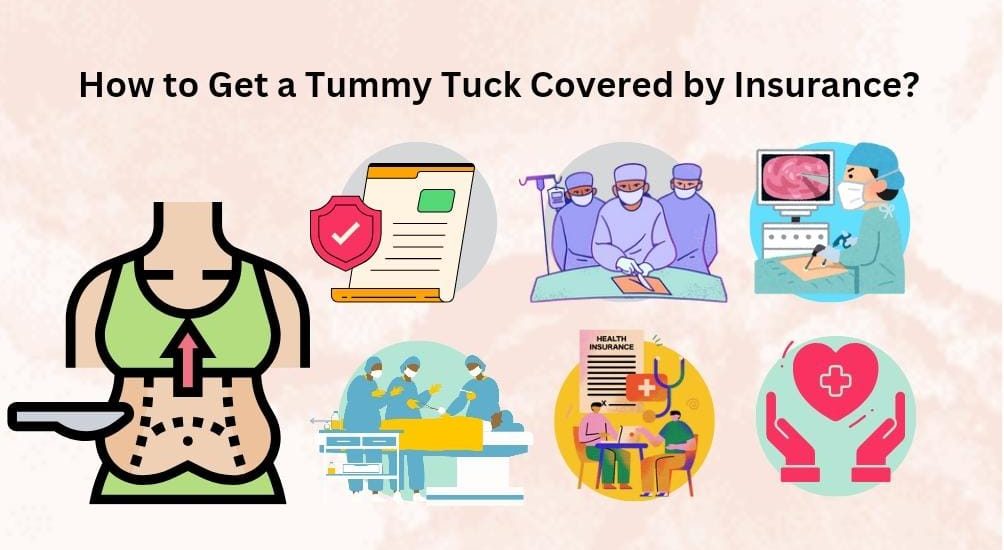Insurance Coverage Criteria
Insurance coverage for tummy tucks is contingent upon the fulfillment of specific medical criteria. These criteria are designed to ensure that the procedure is deemed medically necessary, rather than elective.
Common qualifying conditions for tummy tuck coverage include:
Abdominal Wall Laxity
Extreme laxity or looseness of the abdominal wall, often resulting from significant weight loss, pregnancy, or aging.
Diastasis Recti
A condition where the two muscles of the abdomen (the rectus abdominis) separate, creating a noticeable bulge.
Hernias
Protrusions of internal organs or tissues through weakened areas of the abdominal wall.
Excessive Skin and Fat
Large amounts of excess skin and fat that cannot be effectively removed through diet and exercise alone.
Functional Impairments
Tummy tuck surgery may be covered if it significantly improves functional abilities, such as reducing pain or improving mobility.
Documentation Requirements
To ensure the successful approval of an insurance claim for a tummy tuck, it is crucial to gather comprehensive medical documentation that supports the medical necessity of the procedure. Insurance companies typically require a range of records and evidence to evaluate the validity of the claim.
Medical Records
Medical records serve as a comprehensive history of the patient’s medical condition and treatment journey. These records should include:
– Detailed medical history: A detailed account of the patient’s overall health, including past and present medical conditions, surgeries, and any relevant family history.
– Physical examination findings: A thorough documentation of the patient’s physical examination, including measurements, observations, and any abnormalities related to the abdominal area.
– Diagnostic imaging: Imaging studies, such as X-rays, CT scans, or MRIs, can provide visual evidence of the extent of abdominal laxity, hernias, or other underlying medical conditions.
– Laboratory test results: Blood tests or other laboratory tests may be used to assess the patient’s overall health and rule out any underlying medical conditions that could impact the safety or effectiveness of the tummy tuck procedure.
Supporting Evidence
In addition to medical records, insurance companies may also request supporting evidence to further substantiate the medical necessity of the tummy tuck. This evidence can include:
– Photographs: Pre-operative and post-operative photographs can provide visual documentation of the patient’s abdominal appearance and the improvement achieved through the procedure.
– Letters of support: Letters from the patient’s primary care physician or other healthcare providers can provide additional insights into the patient’s medical condition and the benefits they expect from the tummy tuck.
– Patient self-assessment tools: Questionnaires or self-assessment tools can help quantify the patient’s symptoms, such as pain, discomfort, or functional limitations, and demonstrate the impact of the abdominal laxity on their quality of life.
Pre-Authorization Process
Obtaining insurance approval for a tummy tuck requires navigating the pre-authorization process, which involves submitting a formal request to your insurance provider for coverage. This process ensures that your insurance provider reviews your medical history and determines if the procedure is medically necessary and covered under your plan.
To initiate the pre-authorization process, follow these steps:
Submitting a Pre-Authorization Request
- Gather medical records: Collect relevant medical records, such as doctor’s notes, test results, and imaging studies, that support the medical necessity of the tummy tuck.
- Contact your insurance provider: Reach out to your insurance provider’s customer service department to request a pre-authorization form.
- Complete the form: Fill out the pre-authorization form thoroughly, providing detailed information about your medical condition, symptoms, and the proposed tummy tuck procedure.
- Submit the request: Submit the completed form along with the supporting medical records to your insurance provider for review.
Appeal Process
If your insurance claim for a tummy tuck is denied, you have the right to appeal the decision. The appeal process involves submitting additional documentation and evidence to support your claim.
To prepare an appeal, you should:
- Review the denial letter carefully to understand the reasons for the denial.
- Gather any additional medical records or documentation that supports your claim.
- Write a letter to your insurance company explaining why you believe the decision should be overturned.
- Submit your appeal letter and supporting documentation to your insurance company.
Independent Medical Review
If your appeal is denied, you may be able to request an independent medical review (IMR). An IMR is an independent assessment of your medical records by a doctor who is not affiliated with your insurance company.
To request an IMR, you will need to contact your insurance company and ask for the IMR process. You will need to provide the insurance company with your medical records and any other relevant information.
The IMR doctor will review your medical records and make a decision about whether your tummy tuck is medically necessary. If the IMR doctor agrees with your insurance company’s decision, your appeal will be denied. However, if the IMR doctor disagrees with the insurance company’s decision, your appeal will be approved.
Alternatives to Insurance Coverage

If your tummy tuck is not covered by insurance, there are several alternative financing options available. These options can help you spread out the cost of your surgery and make it more affordable.
Medical Loans
Medical loans are a type of personal loan that is specifically designed to cover the cost of medical expenses. These loans typically have lower interest rates than other types of personal loans, and they can be repaid over a longer period of time.
Payment Plans
Some plastic surgery clinics offer payment plans that allow you to spread out the cost of your surgery over a period of months or years. These plans typically have higher interest rates than medical loans, but they can be a good option if you do not qualify for a medical loan.
Financing Through Plastic Surgery Clinics
Some plastic surgery clinics offer financing through third-party lenders. These loans typically have higher interest rates than medical loans or payment plans, but they can be a good option if you do not qualify for other types of financing.
Considerations for Patients
When seeking insurance coverage for a tummy tuck, patients should carefully consider the following factors:
Medical History
* Prior abdominal surgeries or medical conditions affecting the abdominal area
* Obesity or significant weight fluctuations
* Smoking or other tobacco use
* Pregnancy or plans for future pregnancy
Lifestyle Factors
* Exercise habits and fitness level
* Diet and nutrition
* Smoking or other tobacco use
* Alcohol consumption
Financial Implications
* Insurance coverage limits and exclusions
* Out-of-pocket expenses, such as deductibles, copayments, and coinsurance
* Long-term costs associated with maintaining results, such as follow-up care and potential revisions
It’s essential for patients to discuss these factors with their healthcare provider and insurance company to determine if a tummy tuck is medically necessary and covered by their insurance plan.






